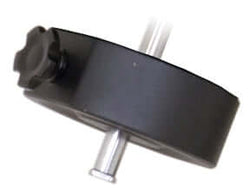Celestron CGX 800 Rowe-Ackerman Schmidt Astrograph (RASA) Computerized Telescope With CGX German EQ Mount (12058)
12058

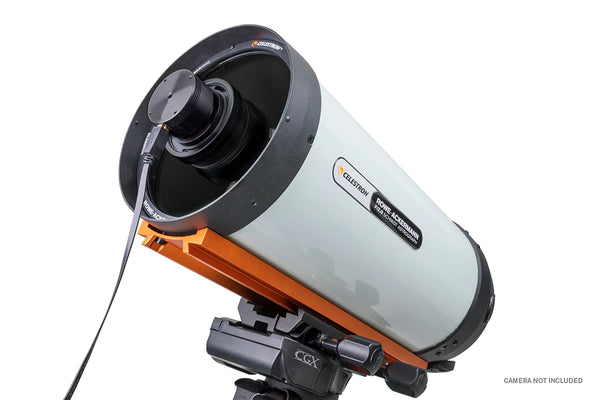
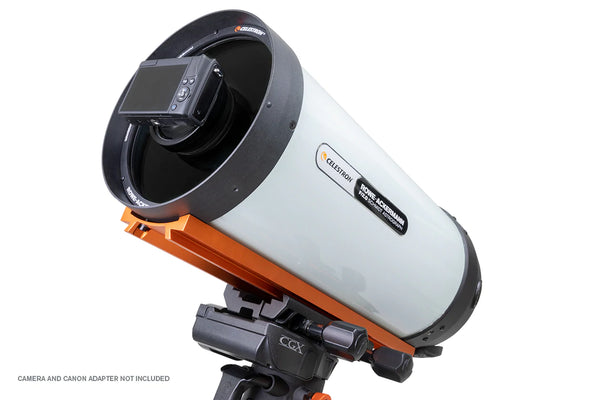

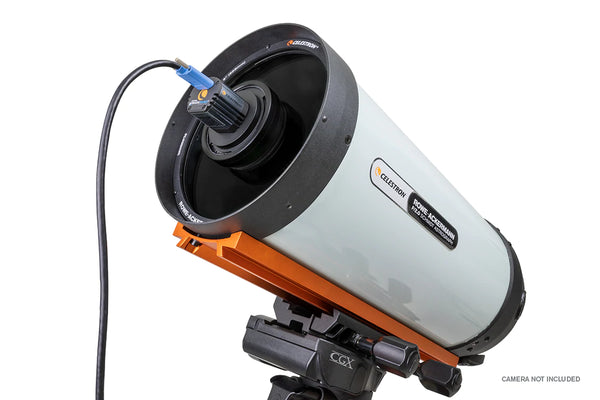



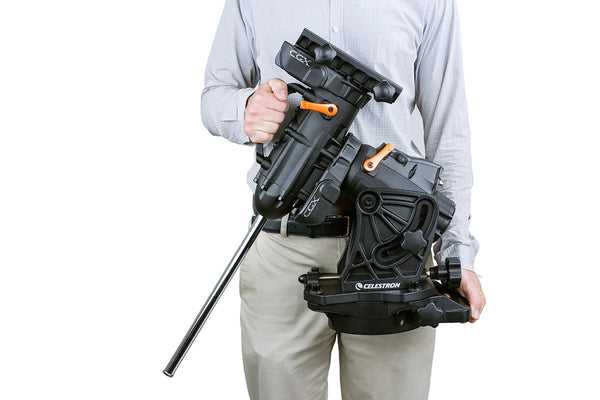
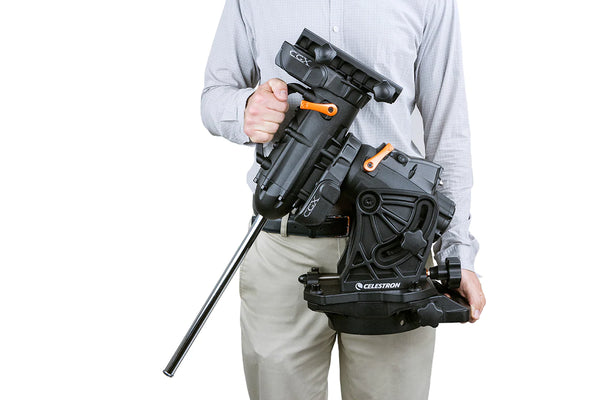
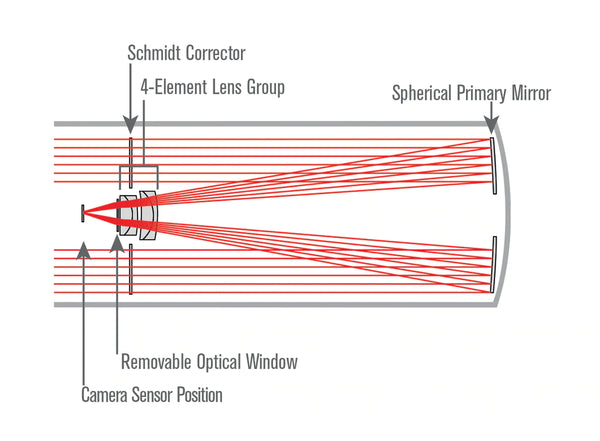
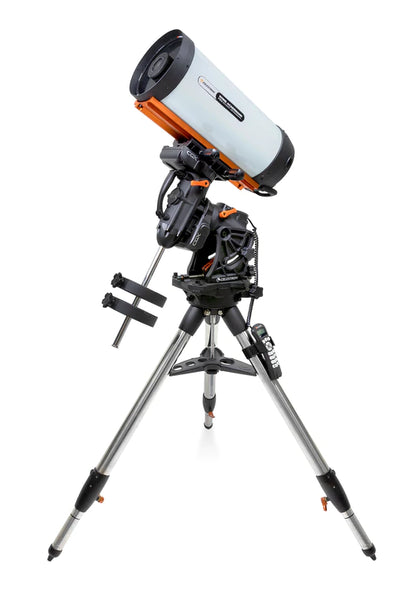














Celestron CGX 800 Rowe-Ackerman Schmidt Astrograph (RASA) Computerized Telescope With CGX German EQ Mount (12058)
12058
Products in the Same Family
Why Purchase from All-Star Telescope?
Free Expert Support
Whether you are a first timer needing help with setting up or an enthusiast that can't quite make that one thing work, our expert staff are ready to support your needs. With decades of knowledge and first hand experience we've been there and we can help you through it!
Stress Free, Secure Transactions
You can trust purchasing and delivery with All-Star Telescope. All of our transactions are 100% secure and Level 1 PCI DSS compliant thanks to Shopify's ShopPay platform. For additional protection, we insure 100% of the value of every shipment we make. If it get's lost during shipment, we replace it. If it gets damaged during shipment, we replace it. We make sure your product arrives exactly as you would expect it to; we promise.
We also ensure privacy protection. We never keep any of your credit card information on file and any of your personal data is stored according to our policies.
30 Day Return Policy
Buy with confidence knowing that we accept returns up to 30 days after purchase. We want you to have something you will actually use and we are confident that we keep good quality products in our store with No Junk.
Price Match Promise
Shipping around for the best price is tough, we make it easier by offering the best pricing in the market. But if you find a better price on an in-store item somewhere else we will match it!
Recommended Accessories
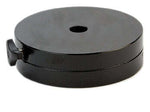
Celestron 12 lb Counterweight for 19mm sha...

Celestron Counterweight 11lbs for 19mm Sha...
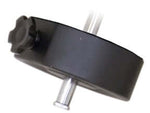
Celestron Counterweight 17lbs for 19mm Sha...
Product Description
This kit combines the 8" Rowe-Ackermann Schmidt Astrograph (RASA) with the state-of-the-art CGX German equatorial mount. Simply add a camera and this package offers everything you need to take spectacular images of wide-field deep sky objects. Although about the same size as the CGEM II, the CGX is a big step up in performance and features, especially for imaging applications.
RASA Performance Made for Everyone
Capture spectacular wide-field deep sky images in seconds with Celestron's portable astrograph, the 8" Rowe-Ackermann Schmidt Astrograph (RASA). This incredibly fast f/2.0 system is the perfect companion to today's color astronomical CMOS cameras, smaller CCD cameras, and mirrorless cameras. Thanks to its fast focal ratio and patented optical design, you can produce sharp, detailed images and, in many cases, skip the autoguider completely. Weighing in at just 17 pounds, it's easy to transport your 8" RASA to the most remote dark sky locations.
The 8" RASA is an imaging telescope that delivers a flat-field without optical aberrations for razor sharp stars across a wide field-of-view. It can capture stunning deep-sky astronomical images without the challenges typically presented by longer focal length instruments at a fraction of the cost of those systems.
The latest addition to the RASA family, this 8" version is a much more portable and affordable version of the heralded RASA 11, which was introduced to much acclaim in 2014. With the 8" RASA joining the lineup, a wider range of astroimagers can enjoy the benefits of the RASA design. It has many of the same thoughtfully designed features as its "big brother" RASA 11, including the integrated air-cooling system, internal filter mount, and sturdy CGE dovetail mounting bar.
Purely designed for imaging, the 8" RASA cannot be used visually. The prime focus focal plane is located at the front of the optical system, so it cannot accommodate a traditional eyepiece.
Shorter Exposure Times and Virtual "Real-Time" Observing
Since it is an F/2.0 optical system, imagers can use shorter exposure times to capture detail in faint objects. When combined with sensitive cameras and the proper "live stacking" software, the 8" RASA can provide an almost real-time observing experience. View images on a computer instantly that are brighter and more detailed than can be seen in much bigger telescopes with the naked eye.
Ultra-Stable Focus System
With the launch of the 8" RASA, Celestron is unveiling a focuser design that mitigates lateral movement of the primary mirror when focusing, slewing, or tracking with the astrograph. Focusing is easier, more accurate, and more stable than ever. The key to the Ultra-Stable Focus System is a precision linear ball bearing, which is tested during assembly to ensure optimal results.
Built for Today's Latest Cameras
Unlike the larger RASAs that work with DSLR and large CCD cameras, the 8" model was designed with color astronomical CMOS cameras, smaller CCD cameras, and mirrorless cameras in mind. The telescope does not work with standard DSLR cameras. It is optimized for sensors with up to a 22mm diagonal, but performs well with sensors up to 32mm diagonal. The APS-C sized sensors used in many mirrorless cameras are a good choice. 42mm full frame sensors will also work, but performance will be poor at the edges of the sensor and field illumination will be reduced. Additionally, we do not recommend pairing RASA 8 with any camera body more than 4" in diameter. See the chart below to determine if your camera is compatible with RASA 8.
| Camera | Compatible with RASA 8? | Adapter required |
| Astronomical CMOS/CCD camera with C-mount | Yes | C-mount adapter (included) |
| Astronomical CMOS/CCD camera with M42-thread mount | Yes | M42 adapter (included) with M42 extension tubes (not included) |
| Astronomical CMOS/CCD camera with other mount | Yes | Custom camera adapter |
| Canon mirrorless with APS-C sensor | Yes | Canon mirrorless adapter(sold separately) |
| Sony mirrorless with APS-C sensor | Yes | Sony mirrorless adapter(sold separately) |
| Canon mirrorless with full frame (42mm) sensor | Yes, but not optimized across the full sensor | Canon mirrorless adapter(sold separately) |
| Sony mirrorless with full frame (42mm) sensor | Yes, but not optimized across the full sensor | Sony mirrorless adapter(sold separately) |
| DSLR | No | -- |
Unique Optical Design
RASA's optical design is patented (US 2016/0299331 A1). The design consists of a Schmidt corrector, primary mirror, lens group, and optical window. The lens group contains 4-elements and utilizes rare-earth elements. Unlike many telescopes that only perform well over the visible spectrum (400-700nm), the 8" RASA's optics are designed to perform over a wider spectral range, from 400-800nm. This allows more of the light emitted from the astronomical object to be sharply focused in the image.
With many imaging systems, adding an extra piece of flat glass such as a filter does not change optical performance. However, that is not the case with super-fast optical systems like the RASA. Our engineers addressed this by designing the RASA with a removeable optical window, so you can maintain peak optical performance if a filter is added or if a camera has its own optical window. Celestron offers a Light Pollution Imaging Filter designed specifically for the 8" RASA, which mounts in place of the optical window.
All refractive optical surfaces are coated with StarBright XLT coatings, while the primary mirror uses enhanced aluminum coatings. This maintains high light transmission through the entire optical system.
When compared with "Hyperstar SCT" systems, the RASA 8 provides better optical performance and field illumination.
CGX: The Ideal Platform for RASA
The CGX is the culmination of Celestron engineers' decades of experience in equatorial mount design, incorporating feedback from imagers worldwide. Combined with the RASA 8, it is a state-of-the-art deep-sky astronomical imaging system.
The CGX is an incredibly sturdy equatorial mount which rigidly supports the RASA 8. The mount was designed more compactly, so the instrument load is held closer to the R.A. axis, thus reducing torque from the load. It was also designed using FEA (Finite Element Analysis) software, which helped to optimize the stout structure of the mount. As a result, the CGX can support more weight than other mounts with similar mass. With its 55 lb load capacity, it can easily handle the RASA 8, which weighs only 17 lbs., along with a camera and any accessories. Expect a vibration-free setup, even in somewhat windy conditions. The RASA 8 connects directly to the CGX with its CGE dovetail mounting bar.
The heavy-duty adjustable height tripod has 2" diameter steel tripod legs with an extra-wide stance for improved stability. Graduated markings on the tripod legs make it easy to extend them to the same height and level the tripod.
The mount is packed with functionality and conveniences that make imaging with the 8" RASA easy. The fully computerized mount will automatically "GoTo" any of the 40,000+ astronomical objects selected from the NexStar+ hand controller's database and automatically track the object as it appears to move across the night sky.
Designed with imaging in mind, the CGX motor drive system builds upon learnings from previous generations of mounts. You can trust CGX to accurately track during an exposure. At the heart of the system are low cog DC servo motors with integrated optical encoders. The low cog design helps the motors run smoothly, while the integrated optical encoders provide accuracy. The motors connect to the worm gears with a belt-and-pulley system (instead of spur gears) to reduce gear backlash when the motor changes directions. The steel worm gears are supported by precision bearings and spring-loaded against a brass worm wheel, which also helps ensure a smoothly operating drive system with minimal backlash and no binding.
To track objects in the night sky, the mount must first be polar-aligned. Celestron makes this process easier than ever with the innovative All-Star Polar Alignment procedure. No extra equipment, such as a polar finder scope, is required. (An optional polar alignment finder scope is available if desired.) Best of all, the alignment can usually be completed in about 15 minutes, even without a clear view of Polaris.
All mounts have some amount of "periodic tracking error" inherent in them caused by tiny gear imperfections. To mitigate this, the CGX has Permanent Periodic Error Correction (PPEC). This allows you to run a routine to record the periodic errors only once; the recording is kept in memory, and subsequently corrects for the mount's periodic tracking error. If an even higher level of tracking accuracy is desired, the CGX also has a dedicated autoguider port to connect an autoguiding camera directly to the mount to correct for any residual tracking errors.
Conditions for imaging are best when celestial objects are at their highest point in the sky with the darkest background, called the meridian. But some German equatorial mounts have trouble tracking near the meridian because they need to perform a "meridian flip," readjusting their position to avoid the tube striking the mount. CGX does not suffer from this problem, imaging through the meridian with ease and not requiring a meridian flip until the object is a full 20° past the meridian.
The NexStar+ also has dozens of other functions to control every aspect of the mount's behaviour. These include:
- Multiple ways to align the mount to the night sky
- Adjustable slew rates up to 5°/second
- Northern or Southern hemisphere compatibility
- Adjustable autoguiding rates
- Hibernate mode so the mount can be powered down without loss of alignment
- Continual firmware development, with new features added regularly
- In addition to the autoguider port, the CGX also has other ports to enhance and expand the capabilities of the mount. The hand controller has a USB 2.0 port for those who wish to control the mount with an external computer and optional third-party software (see "Ready for Remote Imaging" section below). There are also 2 AUX ports on the mount that can support optional accessories such as StarSense AutoAlign.
Transporting the entire system to a dark site is extremely manageable, even for one person. The optical tube, mount head, tripod, counterweight bar, and counterweight all disassemble into separate pieces. The only tool ever required is a supplied hex key, which has a holder built into the mount, so you can't lose or forget it. CGX also features two ergonomic carry handles that make carrying and setting up this heavy-duty mount much more comfortable. When it's time to transport your mount, the tripod accessory tray "nests" into the legs when collapsed, stabilizing the tripod in your vehicle and ensuring that you don't lose the tray.
Ready for Remote Imaging
Today's imagers do not necessarily want to be near their telescope outside when they are capturing images. Rather, they would prefer to be indoors controlling the mount and camera with a computer, while the telescope is in the backyard, or even hundreds of miles away in a dark remote observing site. Not every mount is capable of remote observing operation, but the CGX was designed specifically with this in mind. Celestron's engineers thought through every scenario that might occur in the field, since it's very likely that no one will be around to immediately "rescue" a remote telescope if something unexpected occurs.
One of the most critical problems that can occur during remote operation is the optical tube inadvertently striking the mount. This will not only ruin an exposure and require realignment with the sky, but could also damage expensive equipment. This type of strike cannot happen with CGX because optical switches on each axis stop the motors before the astrograph can run into the mount, without loss of alignment.
Should power be somehow interrupted, the mount has "home position" optical switches that allow easy remote realignment of the mount. The mount's cables are all wired internally through the mount, and all external inputs, including the power jack, are on a stationary section of the mount. This prevents cables from becoming snagged or tangled and unplugged as the astrograph is moving. The mount also has hard stops to physically limit the motion of the astrograph on each axis, preventing the internal cabling from being overly twisted or pulled and potentially failing. In addition, the hard stops provide a "fail safe" safety measure to protect the astrograph should the limit switches somehow fail. The power jack for the mount utilizes a threaded barrel connector, ensuring the power cable won't become unplugged and cause the mount to lose power.
For remote imaging, the mount needs a way to be controlled by an external computer. The CGX has two ways to connect to a computer via USB 2.0. First, it has a USB port on the mount itself which is used exclusively to connect to a PC running the included Celestron PWI telescope control software. Developed in partnership with PlaneWave Instruments, the software has an intuitive graphical user interface and provides an excellent solution for remotely operating the mount. It incorporates multi-point mount modelling to provide the most accurate alignment of the mount to the sky possible. In addition, the included NexStar+ hand controller also has its own USB 2.0 port for computer connection; this can be used with optional third-party telescope control software by use of an ASCOM driver.
In summary, the CGX and RASA 8 together are a top-tier imaging system built for performance and ease of use. This kit is perfect for imaging in the backyard or at a remote dark sky site, whether you are near the telescope or on the other side of the globe.
What's in the Box
This Kit Product Contains the Following SKUs:
Specifications
| OPTICAL TUBE INFO: | |
| Optical Design: | Rowe-Ackermann Schmidt Astrograph |
| Aperture: | 203mm (8") |
| Focal Length: | 400mm (15.74") |
| Focal Ratio: | f/2.0 |
| Central obstruction diameter: | 93mm (3.66") (46% of aperture diameter) |
| Light Gathering Power (Compared to human eye): | 843x |
| Resolution (Rayleigh): | 0.68 arc seconds |
| Resolution (Dawes): | 0.57 arc seconds |
| Image Circle: | 22mm (.86") Ø, 3.15° |
| Useable field: | 32mm (1.26") Ø, 4.6°, only minimal performance loss at edge of FOV |
| Wavelength range: | 400 - 800 nm |
| Spot size: | < 4.6 μm RMS across image circle |
| Optical Coatings: | StarBright XLT |
| Off-axis Illumination: | 93% at 11mm (.43") off-axis |
| Optical Window: | 46mm (1.81") Ø |
| Back focus with included camera adapter: | 25mm (.98") |
| Back focus from top of threaded collar: | 29mm (1.14") |
| Optical Tube: | Aluminum |
| Optical Tube Length: | 628mm (24.7") |
| Optical Tube Diameter: | 235mm (9.3") |
| Focuser: | Ultra-Stable Focusing System |
| Finderscope: | Not included |
| Optical Tube Weight: | 17 lbs (7.7 kg) |
| Other Features: | Air-cooling system, integrated filter mount |
| Included items: | M42 camera adapter | C-thread camera adapter | Fan battery pack |
| Dovetail: | CGE Dovetail Bar |
| MOUNT INFO: | |
| Mount Type: | Computerized Equatorial |
| Instrument load capacity: | 55 lbs (25 kg) |
| Height adjustment range (includes mount and tripod): | 1200.15mm - 1968.5mm (47.25" - 77.5") |
| Tripod Leg Diameter: | 50.8mm (2") Steel tripod with graduated markings on lower section |
| Latitude adjustment range: | 3° - 65° |
| Mount Head Weight: | 44 lbs (20 kg) |
| Accessory Tray: | Yes |
| Tripod Weight: | 19.2 lbs (8.7 kg) |
| Weight of Counterweights: | 2 x 11 lbs |
| Slew Speeds: | 9 slew speeds - max speed 4°/second |
| Tracking Rates: | Sidereal, Solar and Lunar |
| Tracking Modes: | EQ North and EQ South |
| GPS: | N/A |
| Dovetail Compatibility: | Dual saddle plates (CG-5 and CGE saddle) |
| Number of Auxiliary Ports: | 2 AUX Ports (Hand Control can use either AUX Port) |
| Autoguide Port: | Yes |
| USB Port: | Yes, input for Mount and Hand Control |
| Power Requirements: | 12V DC, 4 amps |
| Motor Drive: | DC servo motors |
| Alignment Procedures: | 2-Star Align, 1-Star Align, Solar System Align, Last Alignment, Quick Align |
| Periodic Error Correction: | Yes |
| Computerized Hand Control: | 2 line x 18 character backlit Liquid Crystal Display, 19 LED backlit buttons, USB 2.0 Port for PC connection |
| NexStar+ Database: | 40,000+ objects, 100 user defined programmable objects. Enhanced information on over 200 objects |
| Software: | CPWI Telescope Control Software | Celestron Starry Night Special Edition Software | SkyPortal App |
| Total Kit Weight: | 124.2 lbs (56.3 kg) |
| Solar Warning: | Never look directly at the Sun with the naked eye or with an optic (unless you have the proper solar filter). Permanent and irreversible eye damage may result. Never use your optic to project an image of the Sun onto any surface. Internal heat build-up can damage the optic and any accessories attached to it. Never leave your optic unsupervised. Make sure an adult who is familiar with the correct operating procedures is with your optic at all times, especially when children are present. |
What can I see with a Celestron CGX 800 Rowe-Ackerman Schmidt Astrograph (RASA) Computerized Telescope With CGX German EQ Mount (12058)?
Here are some simulated views of common objects. Results with your telescope will vary with viewing conditions, obrits, equipment and more.
Jupiter with
25mm Eyepiece - 16x Magnification
(Sold Separately)
Jupiter with
10mm Eyepiece - 40x Magnification
Sold Separately
Jupiter with
5mm Eyepiece - 80x Magnification
Sold Separately
Moon with 25mm Eyepiece
16x Magnification
(Sold Separately)
Moon with 10mm Eyepiece
40x Magnification
Sold Separately
Moon with 5mm Eyepiece
80x Magnification
Sold Separately
Andromeda with 36mm Eyepiece
11x Magnification
Sold Separately
Andromeda with 25mm Eyepiece
16x Magnification
(Sold Separately)
Andromeda with 10mm Eyepiece
40x Magnification
Sold Separately
Additional Articles, Videos, and Links

Using Your First Telescope - Part Two: Aligning a GoTo Scope
GoTo telescopes are terrific for their ease of finding objects, then automatically tracking them. They work well, but only if they are set up properly. Here are tips for avoiding the common errors.
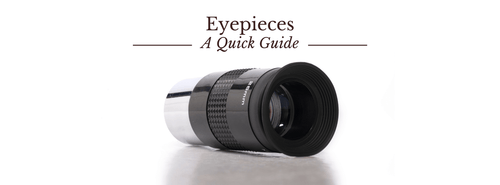
How to Pick the Best Telescope Eyepieces
Finding the right new telescope eyepiece can be a game changer. This post will help you to pick the best telescope eyepiece for your needs.




